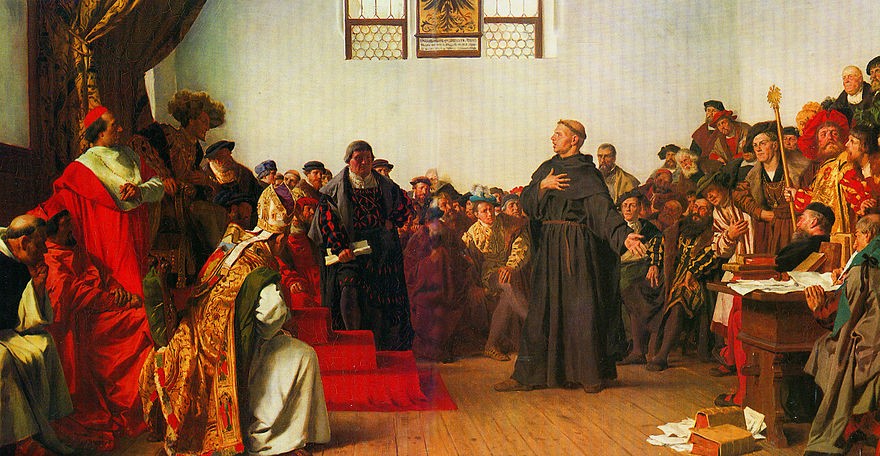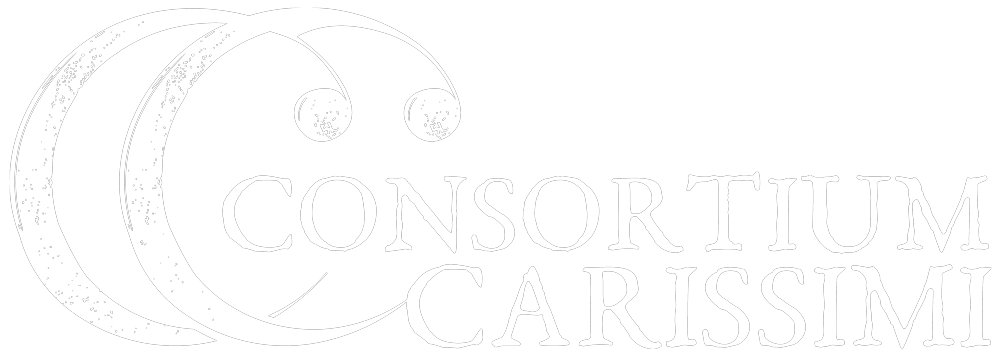
Luther at the Diet of Worms, by Anton von Werner, 1877
from The Concise Guide to Western Music, Barbara Russano Hanning (Professor of Music, The City College and Graduate Center, CUNY)
The Reformation began as a theological dispute that was set in motion by Martin Luther in 1517 and mushroomed into a rebellion against the authority of the Catholic Church and the spiritual leadership of Rome, the center of Western Christianity. The liturgical changes that eventually ensued naturally brought about musical changes, which differed from country to country according to the degree of reform advocated by the various Protestant leaders: Luther in Germany; Calvin and his followers in France, the Low Countries, and Switzerland; and Henry VIII in England.
At first, the music of the Reformation in Germany, written by Lutheran composers, remained very close to the traditional Catholic sources and styles of plainsong and polyphony. Some music retained the original Latin texts, other works used German translations, and still others had new German texts fitted to the old melodies (this work was called a contrafactum). The Lutheran Church’s most distinctive and important musical innovation became the strophic hymn— called Choral or Kirchenlied (church song) in German and chorale in English— intended for congregational singing in unison. Some tunes were borrowed; others were newly composed. Chorales became source material for later Lutheran composers, such as J. S. Bach. Just as plainchant was the basis for musical expansion and elaboration for Catholic composers, so, too, the repertory of chorales became the starting point for a great deal of Lutheran church music from the sixteenth century until the time of Johann Sebastian Bach (1685–1750) and beyond.
Reformation church music outside Germany developed along similar lines, except that Calvin and leaders of other Protestant sects opposed certain elements of Catholic ceremony much more strongly than Luther had. They distrusted the allure of art in places of worship and in services, and prohibited singing of texts not found in the Bible. As a result, the only notable contributions to music from the Calvinist churches were their Psalters—rhymed metrical translations of the Book of Psalms set to newly composed melodies or, in many cases, to tunes of popular origin or from plainchant. Since the Calvinists discouraged musical elaboration, they seldom expanded the Psalter tunes into larger vocal or instrumental forms. In England, under Henry VIII, the Anglican Church’s separation from Rome in 1534 occurred more for political than for religious reasons; so English church music was less affected and remained closer to Catholic musical traditions (except that the English language replaced Latin in the liturgy).
The Catholic Church met the defection of the Protestant reformers by starting its own program of internal reform known as the Catholic Reformation. This movement not only resulted in many liturgical reforms, it also reaffirmed the power of music to affect the hearts and minds of the faithful through an appropriate style of sacred polyphony. At the same time, a broader movement, known as the Counter-Reformation, attempted to win back those who had left the Catholic Church, appealing to their senses through the sheer beauty of its liturgy, religious art, and ceremonial music. Among all the Catholic composers of sacred music to succeed in this strategy, the Roman Giovanni Pierluigi da Palestrina (1525/6–1594) was the most important. Not only did he capture the essence of the musical Counter-Reformation, but his style also became a model for church-music composition—one that has served teachers and students of counterpoint to this day.
Come listen to this inspired vocal and instrumental music presented in concert on Friday, October 27th and Saturday, October 28th by Consortium Carissimi. Tickets are now available online at https://consortiumcarissimi.org/2020/2020/tickets
